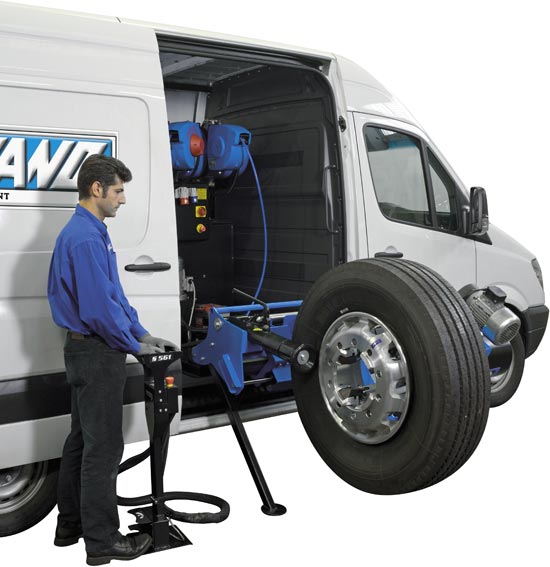Enhance Your Drive: Top-Notch GMC Tires Service at Morris Tires
Enhance Your Drive: Top-Notch GMC Tires Service at Morris Tires
Blog Article
Tire Service: The Influence of Climate Condition
When it comes to guaranteeing optimum efficiency and safety and security on the roadway, recognizing the influence of weather on tire service is vital. From scorching warmth to icy roadways, each climate aspect can considerably influence tire performance and total driving experience. By diving into the effects of varying climate condition on tires, chauffeurs can obtain valuable understandings that might enhance their car's performance and durability. In this conversation, we will certainly check out the elaborate connection between weather condition conditions and tire solution, shedding light on the significance of weather-specific tire maintenance methods and considerations.
Warmth and Tire Performance
When subjected to heats, tires experience changes in efficiency that can dramatically impact vehicle safety and security and handling. The warm produced from long term driving or hot weather conditions triggers the tire rubber to soften, causing lowered step life and boosted wear. As the rubber becomes softer, the tire's grip on the road diminishes, affecting braking distances and overall grip. In extreme cases, too much heat can also trigger tire blowouts, posing an extreme security danger to the car and its passengers.

Cold Climate Impacts
Cold climate problems can have a substantial influence on tire performance and security. In cold climate, tires might also lose air pressure more swiftly, which can impact taking care of and fuel performance.
To mitigate the effects of winter on tires, it is essential to on a regular basis examine tire stress and inflate them to the supplier's suggested levels. Utilizing winter season or all-season tires developed for winter problems can also boost traction and hold on icy or snowy roadways. Appropriate tire upkeep, consisting of routine assessments for wear and damages, ends up being a lot more critical throughout chillier months to guarantee optimal performance and security.
Rainy Conditions Influence
During wet conditions, tire efficiency and safety and security can be substantially influenced by the damp road surfaces and minimized visibility. The tread pattern of tires plays an important role in maintaining grip on wet roads. Tires with damaged treads are more prone to hydroplaning, where a layer of water develops between the tire and the road surface, resulting in loss of traction. To fight this, drivers should frequently evaluate their tires for he said appropriate tread deepness and think about buying tires particularly made for damp problems.
In addition, wet climate can additionally lower exposure, making it challenging for chauffeurs to see the roadway in advance clearly (GMC Tire Service). In such conditions, it is important to adjust driving speeds appropriately and keep a risk-free following range to permit for abrupt quits. Appropriately filled with air tires can likewise help in keeping control on damp roadways by offering better handling and hold
Snow and Tire Safety And Security
When driving in snowy conditions, having the appropriate tires can make a significant difference in safety and security and efficiency. Wintertime tires are designed with unique rubber substances and tread patterns to offer far better traction on snow and ice contrasted to all-season tires.

Furthermore, chauffeurs must take into consideration setting up tire chains in severe snowy conditions. Tire chains offer extra grip by clutching the snow and ice, boosting stability and control. It is crucial to adhere to producer directions when using and setting up tire chains to stop damage to the tires and vehicle (GMC Tire Service). By picking the best tires, keeping correct inflation, and thinking about additional check my site traction help like tire chains, vehicle drivers can enhance their security when browsing snow-covered roadways.
Weather-Related Tire Maintenance
Weather-related tire upkeep encompasses an array of techniques aimed at making sure ideal tire feature and longevity in different climate scenarios. One essential facet of weather-related tire maintenance is tire stress regulation. Inspecting tire step on a regular basis and changing tires when step wear reaches a particular depth is important for preserving traction and stability in adverse climate.
Final Thought
To conclude, climate condition have a considerable influence on tire efficiency and safety and security. From heat affecting tire stress and put on to chilly weather condition reducing grip, it is vital to take into consideration the climate when keeping and utilizing tires. Wet conditions can reduce grip and result in hydroplaning, while snow can raise the risk of accidents if tires go now are not properly equipped. Weather-related tire upkeep is essential in making sure ideal efficiency and safety and security on the roadways.
In this conversation, we will explore the detailed partnership between weather condition conditions and tire service, shedding light on the importance of weather-specific tire maintenance techniques and considerations.

Report this page